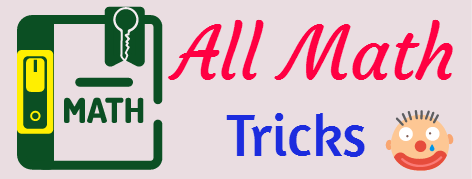In this session explained about arithmetic progression problems like finding the nth term , sum to first nth terms, finding the number of terms in given sequence. . . . etc.
Arithmetic Progression Examples with Solutions for class 10
Please go through the below link for basic concepts of Sequence and series, fundamental concepts with formulas and properties for arithmetic progression
Arithmetic Progression real life problems
Example – 1: Jhon put ₹ 800 into his son’s kiddy bank when he was one year old and increased the amount by 1000 every year. Find the amount of money in the kiddy bank on her on his 1st, 2nd, 3rd, 4th, . . . . . birthday
Solution: Here a = 800 and d = 1000
General form of A.P is a, a+d, a+2d, a+3d, . . . . . . . . .
So the sequence is 800, 1800, 2800, 3800, 4800, . . . . . . .
Example – 2: Cab/Taxi Rental Rates after each km when the fare is ₹ 30 for the first km and raise by 12 for each additional km. what will be the charge after traveling of 50km
Solution: Here a = 30 and d = 12 and nth term is 50
nth term = a + ( n-1)d
So 50th term = 30 + ( 50-1)12 = ₹618
Example – 3: The cost of borewell drilling cost per feet is ₹1000 for first feet and rises by ₹250 for each subsequent feet. Find the charge when good water found after digging borewell about 161 feet.
Solution: Here a = 1000 and d = 110 and nth term is 160
nth term = a + ( n-1)d
So charge for borewell work ( i.e 160 feet digging) = 1000 + ( 161-1)250 = ₹41,000
Arithmetic Progression Basic Problems
Example – 4: Find the A.P with a = -1.5 and d = -0.5
Solution: General form of A.M is a, a+d, a+2d, a+3d . . . . .
So A.M is -1.5, -2.0, -2.5, -3.0, -3.5 . . . . . . . .
Example – 5: Find the values of 20th terms and sum of first 20 terms of the following series 1, 9, 17, 25, . . . . . . .
Solution: Here a = 1 , d= 8
20th term = a + ( n-1)d = 1 + (19 x 8) = 153
sum of first 20 terms S20
S20 = ( 20/2) [ 2 x 1 + 19 x 8 ] = 1540
Example – 6: Find the sum of first 16 terms of A.P 41, 36, 31, . . . . . .
Solution: Here a = 41, d = -5 and n= 16
Formula :
S 16 = ( 16/2) [ (2 x41) + (16-1) -5 ]
= 8 ( 7 ) = 56
Example – 7 : In an A.P a 7 = 30, then find sum of first 13 terms of that A.P
Solution: General form of A.P is a, a+d, a+2d, a+3d, . . . . . . . .
Here a 7 = 30 ; so 7th term is a + 6d = 30 then S 13 = ?
S 13 = ( 13/2) [ 2a + 12d ] = ( 13/2) 2 [ a + 6d ] = 13 x 30 = 390
Example – 8: The sum of first 50 positive integers divisible by 3
Solution: Here the sequence is 3, 6, 9, 12, 15, . . . . .
So a = 3 , d = 3 and n = 50
S 50 = ( 50/2) [ 2a + 49d ] =25 ( 2 x 3 + 49 x 3) = 25 x 153 = = 3825
Example- 9: What will be the maximum sum of 42, 40, 38, 36 . . . . . . .
Solution: The maximum sum of the above sequence is “2” So
The series is 42 + 40 + 38 + . . . . . . + 2
Here a = 42 and d= 2 and n = 42/2 = 21 + 1 = 22
S22 = (22/2) [ (2 x42) + (21 x -2)] = 462
Example- 10: Find the 35th term of the sequence of 3, 8, 9, 13, 15, 18, 21, 23, 27, . . . . . .
Solution: The above sequence can be written as two sequences
i.e 3, 9, 15, 21, . . . . . . . . & 8, 13, 18, 23, . . . . . . .
Now 35th terms is equal to 18th term of the 1st sequence. So
a 18 = 3 + (18-1)6 = 105
Arithmetic Progression Hard Questions
Example – 11:. The number of terms needed to get Sn = 0 in the A.P of 96, 93, 90, . . . . . . . .
Solution: Here the sequence is 96, 93, 90, . . . . . . . .
So a = 96 , d = – 3 and n = ? , S n= 0 ;
S n = ( n/2) [ 2 x 96 + (n-1)(- 3)] = 0
⇒ [ 192 – 3n + 3 ] = 0
⇒ [ 195 – 3n ] = 0 ⇒ n = 65
So in the given sequence 65 number of terms required
Example- 12: The nth term of sequence of number is an = n3 – 6n2 + 11n – 6. Then find the sum of the first three terms of that sequence.
Solution: nth term = n3 – 6n2 + 11n – 6.
First three terms means n = 0, 1, & 2
Now substitute these values in above equation then -6, 0, 6.
So sum is -6+0+6 = 0
Example- 13: Find the Arithmetic progression if a 5 + a 9 = 72 and a 7 + a 12 = 97.
Solution: Here a 5 + a 9 = 72
⇒ ( a +4d) + (a + 8d) = 72
⇒ 2a + 12d = 72 – – – – -( i )
And a 7 + a 12 = 97.
⇒ ( a +6d) + (a + 11d) = 97
⇒ 2a + 17 d = 97 – – – – -( ii )
From (i) and (ii)
a = 6 and d =5
So sequence is 6, 11, 16, 21, 26, . . . . . . .
Example- 14: In an A.P ap = q an aq = p then an = ?
Solution: Here ap = q
i.e ap = a + ( p -1) d = q
⇒ a+ pd – d = q – – – – -( i )
And aq = p
i.e aq = a + ( q -1) d = p
⇒ a+ qd – d = p – – – – -( ii )
From (i) and (ii)
d = -1 & a = p + q – 1
So an = a + ( n-1)d = p + q – 1 + (n – 1) (-1) = p + q – n
Example- 15: In an A.P 31st term is 40, then the sum of 61 terms of that A.P
Solution: Here 31st terms is 40 So
a 31 = 40
⇒ [ a +(31-1)d] = 40
⇒ a + 30d = 40 – – – – -( i )
S 61 =?
⇒ S 61 = ( 61/2) [2a + (61-1) d ] = 61 [ a + 30d]
Now substitute equation no. ( i) in above then
⇒ S 61 = 61 [40] = 2440
Example- 16: In an A.P 7th and 21st terms are 6 and -22 respectively. Find the 30th term.
Solution: Here 7th terms is 6 and 21st term is -22 So
a 7 = 6
⇒ [ a +(7-1)d] = 6
⇒ a + 6d = 6 – – – – -( i )
a 21 = -22
⇒ [ a +(21-1)d] = -22
⇒ a + 20d = -22 – – – – -( ii )
From equations (i) and (ii) a = 18 and d = -2
Now 30th terms is
a 30 = [ 18 + (29 x-2)] = -40
Example-17: Find the value of the expression 1 – 5 + 2 – 6 +3 -7 +4 -8 + . . . . . . . . . to 100 terms
Solution: The given series is 1 – 5 + 2 – 6 +3 -7 +4 -8 + . . . . . . . . . to 100 terms
The series can be rewritten as
⇒ (1 + 2 +3 +4 + . . . . . . . . . to 50 terms) – (5 + 6 + 7 + 8 + . . . . . . . . . to 50 terms)
Both these are in A.P
For 1st series a=1 , d =1 & n = 50 , For 2nd series a=5 , d =1 & n = 50
= (50/2) [ 2(1) + (49)(1) ] – (50/2) [ 2(5) + (49)(1) ]
= (25 x 51 ) – (25 x 59) = -200
Example-18: Find the sum of all number divisible by 7 in between 80 to 500.
Solution: Here 1st term = a = 84 ( which is the 1st term greater than 80 that is divisible by 7.)
The last term less than 500, which is divisible by 7 is 497.
The number of terms in the in the AP ; 84, 112, 119, . . . . . . . . 497.
Here a = 84, d = 7 and number of terms = (497 – 84)/7 + 1 = 60
Sn = (60/2) [ (2 x 84) + (59 x 7) ] = 17430
Example – 19: Find the sum of of first 200 terms of the following series
1 + 4 + 6 + 5 + 11 + 6 + 16 + 7 + . . . . . . . . . .
Solution: The given series is 1 + 4 + 6 + 5 + 11 + 6 + 16 + 7 + . . . . . . . . . . ( 200 terms)
The above series treat every two consecutive terms as one.
i.e (1 + 4) +( 6 + 5) + (11 + 6) + (16 + 7) + . . . . . . . . . . ( 100 terms)
5 + 11 + 17 + 23 + . . . . . . . ( 100 terms )
Here a = 5 , d = 6 and n = 100
S100 = (100/2) [ (2 x 5) + (99 x 6)] = 30200
Example- 20; How many terms of the following series – 12, -9, -6, -3, . . . . . . . must be taken the sum may be 54?
Solution: The given series is – 12, -9, -6, -3, . . . . . . .
Sn = 54 , a = -12 , d = 3
54 = ( n /2) [ -24 + (n -1)3 ]
⇒ n2 -9n – 36 = 0
By factorizing the above equation we can get n values of 12 & -3
Here the value of n cannot be negative. So n = 12
Thanks for reading this article. I Hope you liked this article of “ Arithmetic Progression Problems ”. Give feed back and comments please.

Related Articles
Arithmetic Progression Formulas
Arithmetic Progression Questions with Solutions
Arithmetic Mean formula with Examples
Geometric Progression formulas
Geometric Progression Examples
Harmonic Progression formulas and examples
Relation between AM, GM and HM






4 thoughts on “Arithmetic Progression Problems with Answers for Competitive Exams”
Payal
(February 8, 2023 - 8:00 am)Good questions… Really Very helpful for revision
Thanks for helping ☺️
sivaalluri
(March 8, 2023 - 12:32 pm)Welcome
MASERINO
(June 8, 2023 - 3:19 pm)thx 4 da gud work
sivaalluri
(June 14, 2023 - 4:06 am)Welcome